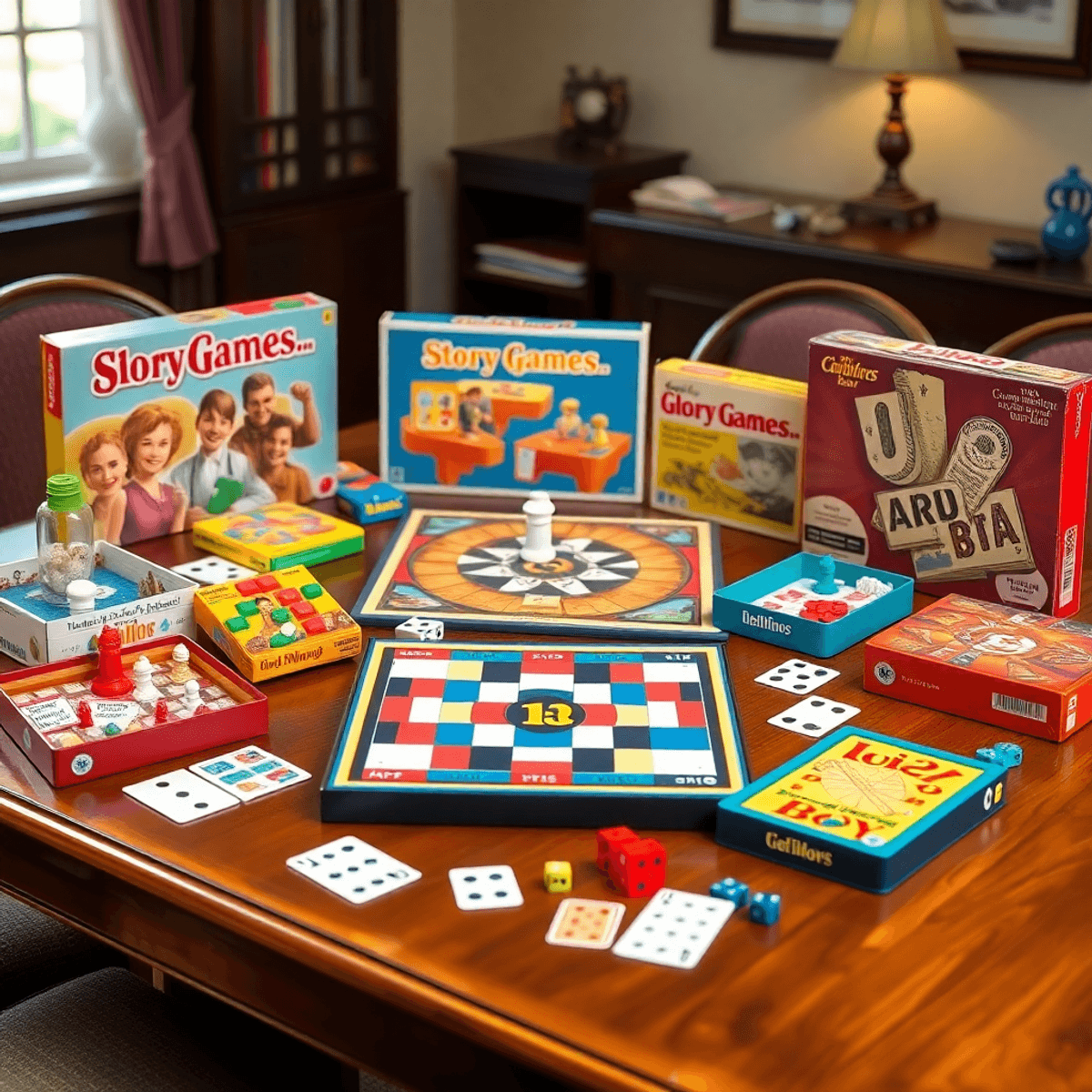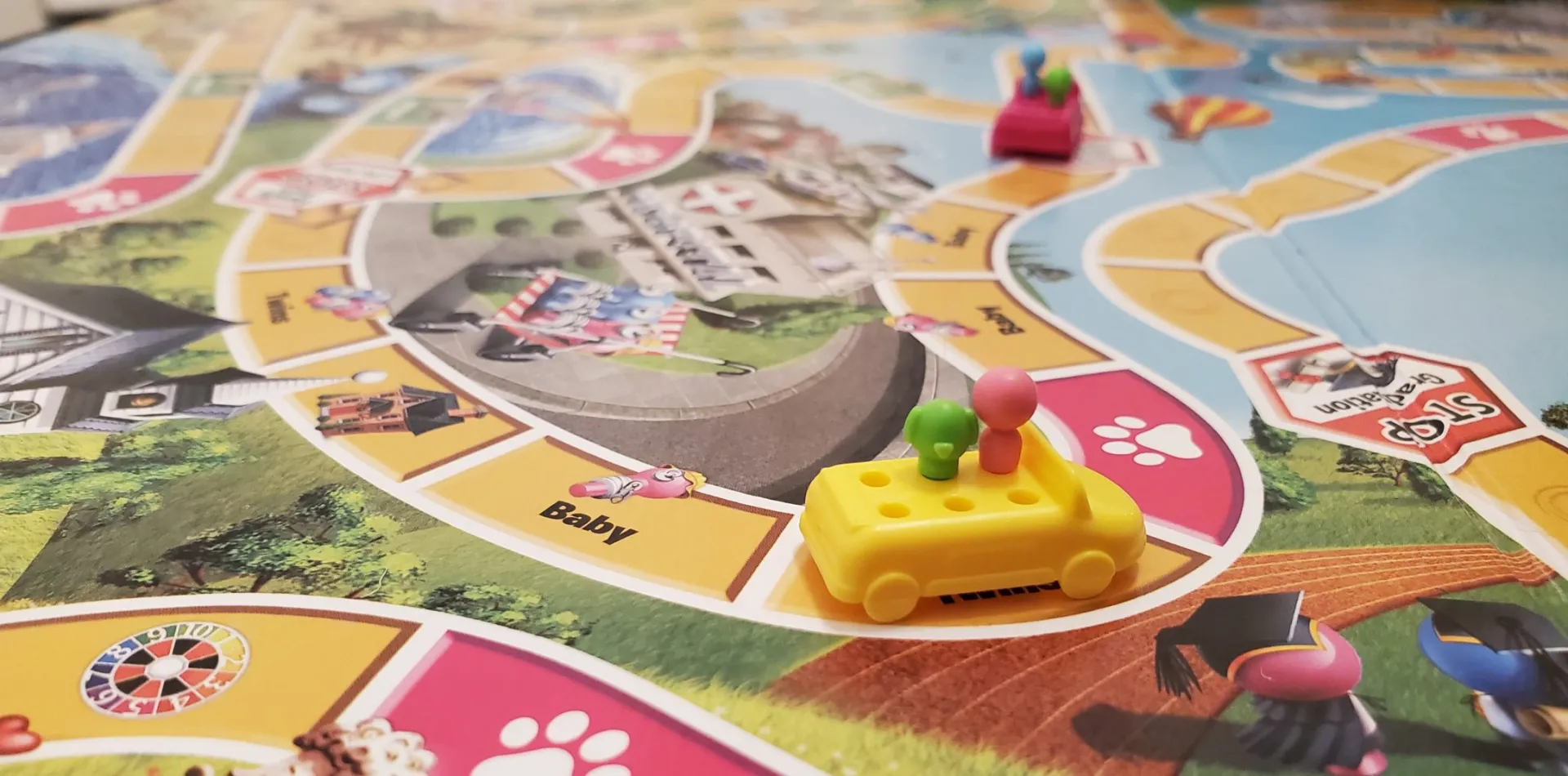
Introduction
The mid-20th century was a significant time for board games. From 1950 to 1970, there was a huge increase in tabletop gaming, turning living rooms into places for strategy, luck, and family fun. This period, known as the Golden Age of Board Games, gave rise to iconic games that are still popular today:
- Monopoly redefined property trading
- The Game of Life captured American dreams
- Candy Land enchanted young players
- Twister brought physical activity to gaming
During this time, several key changes took place:
- New and creative ways of playing games were introduced
- Companies joined forces through mergers
- Licensing partnerships brought fresh ideas to existing games
- Games became widely available through mass-market distribution
These changes set the stage for modern gaming culture. They not only created timeless classics but also established design principles that continue to inspire game creators today. The story of this golden age shows us how ordinary materials like cardboard and plastic, combined with imaginative thinking, shaped entertainment for future generations.
The Rise of Board Gaming (1950s–1970s)
After World War II, the board game industry experienced significant growth. American families, enjoying economic prosperity and moving to suburban areas, embraced board games as a fundamental form of home entertainment. Sales soared from $45 million in 1954 to over $400 million by 1975, indicating a cultural shift in leisure activities.
Popular Board Games of the Time
During this period, several widely popular games were released that transformed family gaming:
- The Game of Life (1960) captured the American Dream through a vibrant, three-dimensional board featuring plastic cars and spinning wheels. Created by Reuben Klamer, it sold over 45 million copies and remains one of the best-selling board games of all time.
- Candy Land (1949) transformed children’s gaming by eliminating the need for reading or complex strategy. Its simple design and colorful aesthetic established new standards for children’s board games.

- Twister (1966) broke traditional gaming conventions by turning players’ bodies into game pieces. Despite initial skepticism, Johnny Carson’s famous demonstration with Eva Gabor on The Tonight Show catapulted it to mainstream success.
Key Features of This Era
Several key features defined this era:
- Bold, colorful packaging designed to stand out on store shelves
- Integration of plastic components and three-dimensional elements
- Simplified rule sets accessible to broader audiences
- Focus on family-friendly themes and social interaction
- Mass production techniques enabling affordable pricing
These innovations created a blueprint for successful board game design that influenced generations of game creators. The period’s emphasis on accessibility and social engagement established board gaming as a mainstream hobby, laying the foundation for future gaming trends.
The Role of Toy Companies in Board Gaming Expansion
Major toy companies played a crucial role in shaping the board gaming industry through strategic acquisitions and innovative marketing techniques. Milton Bradley and Parker Brothers emerged as dominant players, using different approaches to gain market share and set gaming trends.
Milton Bradley’s Market Dominance:
- Pioneered educational games targeting different age groups
- Established international manufacturing facilities
- Created strategic partnerships with European toy makers
- Invested heavily in TV advertising campaigns
Parker Brothers’ Strategic Approach:
- Focused on family-oriented entertainment
- Acquired successful independent games
- Developed sophisticated distribution networks
- Implemented aggressive marketing tactics
The rivalry between these companies led to innovation and improvements in quality. Parker Brothers’ acquisition of Monopoly in 1935 set the stage for decades of strategic game acquisitions. Milton Bradley responded by developing new game concepts and expanding their research and development departments.
These companies transformed game manufacturing through:
- Mass production techniques
- Quality control standards
- Standardized packaging
- Professional game testing procedures
Both companies invested in market research to understand consumer preferences, leading to targeted game development for specific demographics. Their distribution networks expanded from specialty stores to department stores and supermarkets, making board games accessible to wider audiences.
The competition between these industry giants resulted in sophisticated marketing strategies, including:
- Television advertising campaigns
- Celebrity endorsements
- Cross-promotional activities
- Strategic product placement
Licensing Deals and Cultural Phenomena
The combination of popular culture and board games changed the gaming scene in the mid-20th century. TV shows and movies became the ideal launching pad for developing themed board games that targeted existing fan communities.
The Impact of Popular Culture on Board Games
Here’s how popular TV shows influenced the world of board games:
- I Dream of Jeannie and The Twilight Zone, two iconic TV series, inspired board game adaptations that introduced beloved characters to family game nights.
- These licensed games provided players with an opportunity to immerse themselves in their favorite fictional universes, offering an experience that traditional abstract games couldn’t replicate.
How Licensed Games Changed Game Development
The triumph of licensed games brought about a significant shift in the approach companies took towards creating games:
- TV Show Adaptations: Games based on quiz shows like What’s My Line? and Password recreated the thrill of television in the comfort of homes.
- Movie Tie-ins: Film-based games allowed players to relive iconic scenes and narratives.
- Character Merchandising: Popular characters became key elements in game design and marketing strategies.
The Influence of Video Game Properties
In the late 1970s, video game properties began to emerge, adding another layer to licensing. Board game adaptations of Pac-Man showcased how digital franchises could successfully transition into tabletop formats, bridging the gap between electronic and traditional gaming.
Licensed games became significant cultural references, preserving moments in entertainment history while offering new avenues for audiences to engage with their beloved media properties.
Innovations in Game Design
The mid-20th century witnessed revolutionary changes in board game mechanics. Game designers pushed boundaries by introducing real-time elements and three-dimensional components that transformed traditional turn-based gameplay. Operation (1965) pioneered physical skill integration with its innovative buzzer mechanism, creating a nerve-wracking experience that tested players’ steady hands.
The Rise of Video Games and Electronic Board Games
The rising popularity of video games in the late 1970s sparked a new wave of innovation. Electronic board games emerged as a hybrid solution, blending traditional tabletop gameplay with digital elements. This intersection of digital and board gaming has led to debates about the true nature of such games, with some arguing whether digital board games are still board games or have they transitioned into the realm of video games. Dark Tower (1981) incorporated a battery-powered central tower that managed combat sequences and resource tracking, while Electronic Battleship (1977) added sound effects and automated hit detection.
Notable Mechanical Innovations
- Variable player powers in Cosmic Encounter (1977)
- Hidden movement systems in Scotland Yard (1983)
- Cooperative gameplay mechanics in Conquest of the Empire (1984)
These developments laid groundwork for future game design, introducing mechanics that would become staples in modern tabletop gaming. Game companies invested heavily in research and development, creating patents for unique mechanical systems that combined strategy with technological innovation.
Shifts in Consumer Preferences Towards Interactive Gameplay Experiences
In the mid-20th century, there was a significant change in what gamers liked. Players wanted more involvement through hands-on play and social interaction, moving away from traditional games that only used dice or movement.
The Rise of Interactive Games
Market research from the 1960s showed that families spent 60% more time on games that required active participation compared to passive gameplay experiences. This shift led to game designers incorporating:
- Physical Elements: Games like Operation and Don’t Break the Ice capitalized on players’ desire for tactile experiences
- Social Interaction: Twister revolutionized party games by turning players’ bodies into game pieces
- Decision-Making: Titles such as Risk and Diplomacy emphasized strategy and negotiation
Adapting Marketing Strategies
Game manufacturers responded by adapting their marketing strategies to highlight these interactive elements. Television advertisements showcased families and friends actively engaged in gameplay, rather than static board displays. Parker Brothers’ successful campaign for Monopoly emphasized the social dynamics of trading and negotiation.
This consumer-driven evolution shaped game development throughout the era. Companies invested heavily in research and development to create experiences that balanced entertainment with engagement. The result was a new generation of games that demanded both mental and physical participation from players.
Market Oversaturation and Its Effects on Quality vs. Quantity Debate
The explosive growth of board gaming during the 1950s-1970s led to an inevitable market saturation. Major toy companies rushed to capitalize on the growing demand, flooding store shelves with hastily produced games. A study by the Toy Association revealed that board game releases tripled between 1960 and 1975.
This surge created distinct challenges:
- Quality Control Issues: Many games reached the market with minimal playtesting and poor component quality
- Consumer Confusion: The sheer volume of choices overwhelmed buyers
- Price Competition: Manufacturers cut corners to maintain competitive pricing
- Brand Dilution: Established companies saw their reputations suffer from rushed releases
The market oversaturation particularly affected smaller publishers, who struggled to compete with major companies’ marketing budgets. Many innovative designs were lost in the flood of mediocre products. This period taught valuable lessons about sustainable industry growth, with several manufacturers implementing stricter quality control measures in response to consumer backlash.
The saturation also sparked a critical discussion about game development priorities, pushing the industry to balance commercial success with creative integrity. This tension between mass production and quality craftsmanship continues to influence modern board game publishing decisions.
Legacy and Ongoing Influence on Modern Board Games Today
The innovations of the mid-20th century board gaming era continue to shape modern tabletop experiences in profound ways. Modern hits like Ticket to Ride draw inspiration from classic route-building mechanics pioneered by Risk, while Pandemic builds upon cooperative elements first explored in games like Conquest.

Key Mid-Century Influences on Modern Gaming:
- The standardization of player counts (2-4 or 2-6 players) remains a common format
- Color-coding systems for game pieces and cards
- Modular board designs that enhance replayability
- Integration of storytelling elements within gameplay mechanics
The nostalgia factor drives significant market trends, with publishers releasing legacy editions of classic titles. These versions maintain original gameplay while incorporating modern production values and enhanced components. Companies like Restoration Games specialize in updating beloved titles from the Golden Age of board games, preserving their core appeal while adding contemporary mechanics.
The influence extends beyond traditional tabletop games. Digital adaptations of classic board games consistently rank among top-selling mobile apps, bridging generational gaps and introducing new audiences to time-tested gameplay concepts. Modern game designers frequently cite mid-century classics as inspiration for innovative mechanics, creating a continuous thread between gaming’s past and present.
Conclusion: The Lasting Impact of the Golden Age of Board Games on Today’s Gaming Culture
The board gaming revolution of the mid-20th century still influences our gaming experiences today. The innovative ideas from the 1950s to 1970s set important rules for game design that apply to both physical and digital games. From Monopoly to modern masterpieces like Pandemic Legacy, the essence of Golden Age of board games is still present.
These classic games did more than just entertain – they created shared cultural moments that brought families and friends together. Modern game designers are inspired by this rich history while also exploring new possibilities with different gameplay mechanics and technologies.
The message is clear: rediscover these timeless classics that shaped gaming history. Whether you’re playing The Game of Life or trying out the newest app-enhanced board game, you’re part of a gaming legacy that spans generations. The Golden Age of board games teaches us that great games, no matter when they were made, have the ability to create meaningful connections and lasting memories.
[Want to start your classic gaming journey? Check out these restored versions of vintage favorites]



